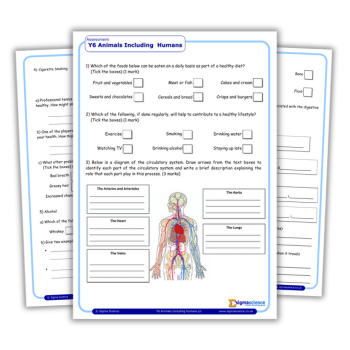Diagnostic assessment – The six jobs of feedback and evaluation

A successful builder knows how to pick the right tool for the job. But when it comes to classroom feedback and evaluation, we need to be more careful about our choices…

- by Clare Sealy

We all know that primary assessment is important. But in some schools it’s too important, with curriculum – the decisions about what to teach – subservient to decisions about assessment.
Such schools believe that the curriculum exists to yield data to populate spreadsheets; and that learning hasn’t happened until those spreadsheets are filled in.
But primary assessment isn’t a window into children’s heads! It’s infuriating, but we can never truly know for sure what our pupils do and don’t know; what has and hasn’t taken root.
We need an informed understanding of the limitations of assessment. Otherwise, we will waste time trying to gain a certainty that just isn’t possible.
Assessment only enables us to make tentative inferences about what has been learned.
Too often, primary assessment is undertaken performatively; as if as long as we do certain assessment rituals, this will result in better learning by magic.
But if we are going to use assessment in an intelligent way, we need to ask ourselves two questions; what are we trying to find out, and what will we do differently as a result?
Because if we aren’t going to take action on what we find, then the whole enterprise has been a waste of valuable learning time.
The next important thing to grasp is that primary assessment isn’t one thing. It is (at least) six different things.
Mixing up these different things undermines the reliability and validity of the inferences we can make.
So, here’s how they should work…
Too often, primary assessment is undertaken performatively
Diagnostic assessment
Most important is diagnostic assessment.
This is the kind of assessment that you as a teacher are carrying out all the time, as you ask questions and look at pupils’ work to find out what they understand.
Diagnostic assessment is powerful. However, it only has power if you use what you find out to flex your teaching in the moment to address misunderstandings.
Don’t carry on teaching regardless, delivering a conveyor belt curriculum that takes no account of whether children are actually learning, in the mistaken belief that covering the curriculum is more important than children understanding it!
Diagnostic assessment is for the teacher, not the learner. It guides professional decision making about where to go next.
Its go-to tools are all-learner response systems, such as mini whiteboards and inclusive questioning routines. These approaches expect all children to actively participate, not just the usual arm-waving suspects.
When Ofsted gives assessment as an area for development in a report, it is almost always referring to the lack of diagnostic assessment.
School improvement plan
Diagnostic assessment happens in the lesson, leading to immediate changes to teaching. Or it happens shortly after, when you look at pupils’ work to help you plan the next lesson.
But you will also want to use assessment for some longer-term planning. Do this by finding out what your pupils have learned at the end of a unit of study.
This is assessment for school improvement. It’s focused more on finding out how successful the cohort as a whole has been, rather than pinpointing the strengths and weaknesses of individual children.
It involves looking back at what has been learned over a topic.
Where children have learned certain elements less successfully, this enables you to plan to address this at some later point.
For example, imagine that you’ve just taught a unit on states of matter, but many in your class are still confused about the difference between evaporation and condensation.
You can reteach it very briefly. Then, make sure that you drop in references to condensation and evaporation in everyday conversations. E.g. “Oh look at the water that has condensed on the window”, or “That puddle won’t take long to evaporate in this sun.”
You can then use retrieval practice quizzes to revisit these concepts.
Finally, you can tweak your curriculum so that next time you teach this unit the misconception is less likely to happen.
Once again, this kind of primary assessment is for the teacher rather than for the pupil.
Motivational primary assessment
You can also use assessment to motivate pupils. Give them information about what they need to work on or how they should change their behaviour to achieve a goal.
However, for motivational assessment to be effective in improving future learning, it must tell the pupil something that is within their power to change.
The profession has been sold assessment as some sort of silver bullet. So, too often teachers give feedback to children when they would be much better off reteaching content.
Telling a child to ‘include more detail’ when they do not know more detail is demotivating and counterproductive.
If you have ever given children targets that tell them their next step is to do X, when X relies on you teaching them this, you will appreciate that this is neither motivating nor helpful!
Next-step targets are useful for you as a teacher, to help you to identify what to teach next; but much less so for pupils, who first need teaching.
Informative primary assessment
Feedback can only be truly motivating when the gap between actual and desired performance is small enough for the pupil to address it with no more than a small nudge.
On the other hand, feedback about effort, attendance, behaviour or homework could provide information that may have the potential to motivate pupils to make different choices.
And it is information about these aspects of learning that are most useful for parents and carers, alongside an indication of whether a pupil’s learning is typical for a child of their age.
Informative assessment needs to be easy to understand, unlike the present system that changes nomenclature at every key stage!
Informative assessment needs to be easy to understand
Self-assessment in teaching
We should also give children self-assessment tools to help them improve their own work.
You can build pupil agency, resilience and independence by teaching subject-specific metacognitive self-assessment strategies.
For example, you can teach your class to use checking strategies to monitor their work for errors. E.g. transcription errors when writing, calculation errors in maths, monitoring their understanding when reading, or process errors (failing to read the whole question for example).
You can teach them about how their memory works and why retrieval practice is a powerful tool for them to have in their self-assessment repertoire.
Evaluative assessment
Finally, there is the kind of evaluative assessment leaders use. Whether in a school, MAT or government, they use it to make inferences about how well a school or system is doing.
This is a perfectly legitimate activity for leaders to undertake. However, the inferences made by such assessments are much more reliable at the cohort level than for individual children.
In any one-off assessment, some children do slightly better, and some do slightly worse than expected.
On average, these cancel each other out.
So evaluative assessments work well as tools of aggregate, collective performance and less well as summative assessment of individual children.
All six of these tools have their place. But what’s important is knowing why you are doing any assessment and what you will do differently as a result.
Evaluative assessments make poor diagnostic assessments and vice versa. Use the right tool for the right job.
Clare Sealy is head of education improvement for the States of Guernsey. Follow Clare on Twitter @ClareSealy











